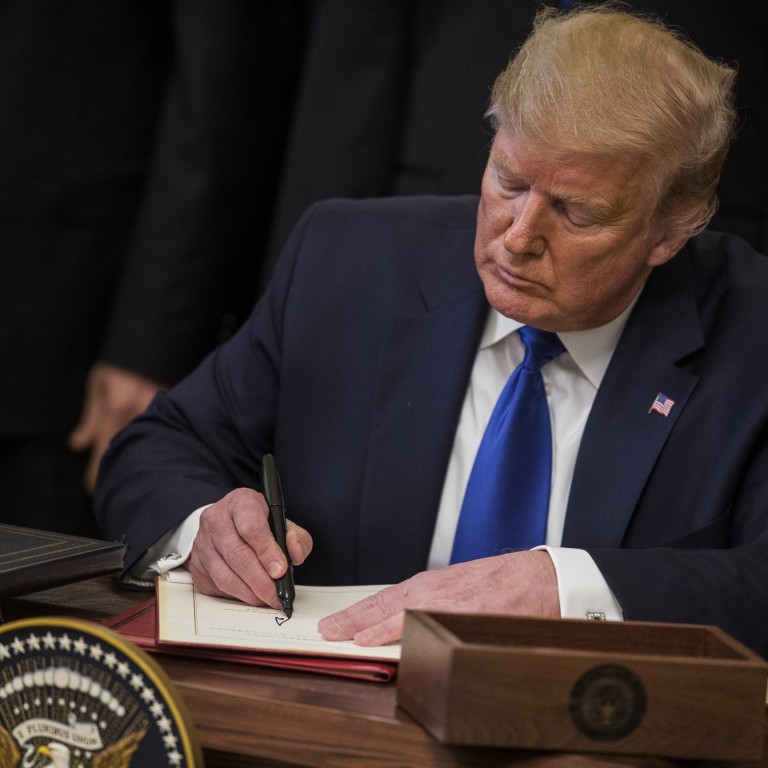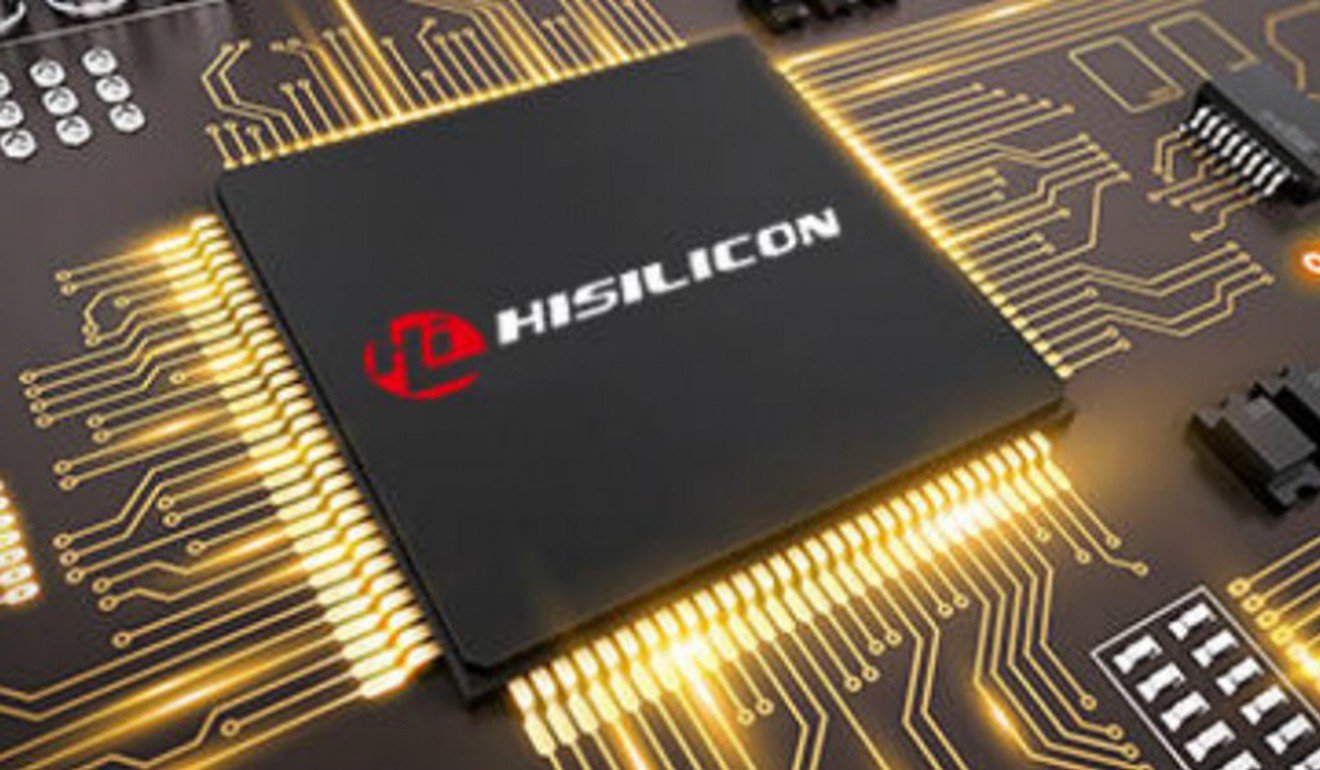
How the US president could end Huawei’s global 5G shipments with the stroke of a pen
- The semiconductors that form the brains of Huawei’s products cannot be made in high volume without US manufacturing technology
Six months after it was banned from using US technology, reports surfaced that Huawei Technologies’ new Mate 30 flagship smartphone and its 5G base stations contained zero US parts.
While those broad claims were questioned by some analysts, Huawei had been able to swap out advanced chips from US suppliers like Qualcomm and Xilinx, which were included in the blacklist, and replace them with its own circuit designs that were fabricated by TSMC, a silicon wafer foundry in Taiwan.
As Huawei executives cheered this feat, hardliners in the Trump Administration were fuming that the company had found loopholes to skirt the ban that was supposed to bring it down.
Members of the Trump cabinet had planned to meet this week to discuss imposing tighter restrictions on Huawei’s ability to purchase US-origin technology, which could include the nuclear option of blocking its access to TSMC’s foundry services.
That meeting was reportedly postponed due to coronavirus concerns but the fact remains that the semiconductors Huawei’s products run on cannot be made in high volume without US manufacturing equipment, and the US president can exercise emergency powers to determine who has access to that technology.
Why Taiwan’s role will be crucial in next phase of US-China tech war
The Trump Administration is hell bent on stopping Huawei from dominating the global 5G roll out as it sees the Chinese company as a national security threat with ties to the Chinese Communist Party. Huawei has repeatedly denied these claims.
Its strategy of diplomatic pressure on allies to block Huawei from their 5G build out has seen mixed results. Australia and Japan agreed but the UK will allow Huawei in noncore elements of the 5G network and Canada has yet to decide. Many other countries, including Brazil, the Philippines and Thailand, are embracing Huawei for 5G.
But with its stranglehold on silicon technology, the US does not need diplomacy to stop Huawei’s 5G rise. Washington has already pressed TSMC to stop supplying Hauwei but could increase the pressure by going straight to the Taiwan Government, the biggest single shareholder in the company.
A tougher targeted approach could see Washington grant a license to TSMC to continue supplying Huawei’s Kirin smartphone chips but not the application specific integrated circuits (ASICs) Huawei designed for its 5G base stations (which replaced the banned field programmable gate arrays, or FPGAs, from US supplier Xilinx).
That would be a bitter pill for Huawei to swallow, which could effectively force it to abandon its position as global telecoms leader and operate as Chinese smartphone brands Oppo and Xiaomi do.
US-Philippine ties fray further with Manila’s embrace of Huawei
Contrary to some reports, Huawei could find itself in a very tight spot. It cannot switch to alternative suppliers in Japan, Korea, Europe or China, because they too depend on US technology to make semiconductors. Any chip supplier that breaks ranks, including TSMC, would risk being cut off from the US equipment needed to make a living.
US suppliers like Applied Materials and Lam Research account for more than half of the global market for semiconductor manufacturing equipment while one company, ASML of the Netherlands, has a more than 20 per cent share because of its dominance in lithography machines that print circuits onto chips, another technology invented in the US.
Last year Washington pressured the Dutch government to stop ASML from shipping a high end EUV scanner to Chinese wafer fab SMIC. American ally Japan, which holds about one third of the global market for chip making gear, would also likely fall in line with the US if push came to shove on Huawei.
Another critical technology controlled by the US is electronic design automation (EDA) software for designing chips. American companies hold 60 per cent of this market, or 85 per cent if you include a US player acquired by Siemens. However, controlling the supply of chips from TSMC or other wafer foundries would itself be enough to cripple Huawei's 5G shipments.

At some point a revolutionary new technology will emerge to disrupt the status quo in silicon – just as transistors made vacuum tubes obsolete in the 1950s. Of course, if that breakthrough originates in the US the balance of power will not shift.
Huawei founder Ren Zhengfei has publicly expressed his admiration for the US and its tech prowess. In the 1990s he undertook a number of American road trips, visiting Bell Labs – where the transistor was invented – and IBM, which he later hired to give advice on restructuring Huawei into a global operation.
There is one question Ren should have asked his American hosts: Is it possible for any company – even a US one – to win a fight with Washington? Bell Labs parent AT&T was the target of US antitrust action in the 1970s and IBM faced a similar case in the 1980s, which dragged on for decades. They both lost.
Is Ren about to meet his Waterloo or will the veteran operator find an escape route?
Craig Addison is a production editor on the Post’s tech desk in Hong Kong. From 2002 to 2009 he worked for SEMI, the Silicon Valley-based trade group representing semiconductor equipment and materials companies. @craigaddison
Purchase the China AI Report 2020 brought to you by SCMP Research and enjoy a 20% discount (original price US$400). This 60-page all new intelligence report gives you first-hand insights and analysis into the latest industry developments and intelligence about China AI. Get exclusive access to our webinars for continuous learning, and interact with China AI executives in live Q&A. Offer valid until 31 March 2020.

